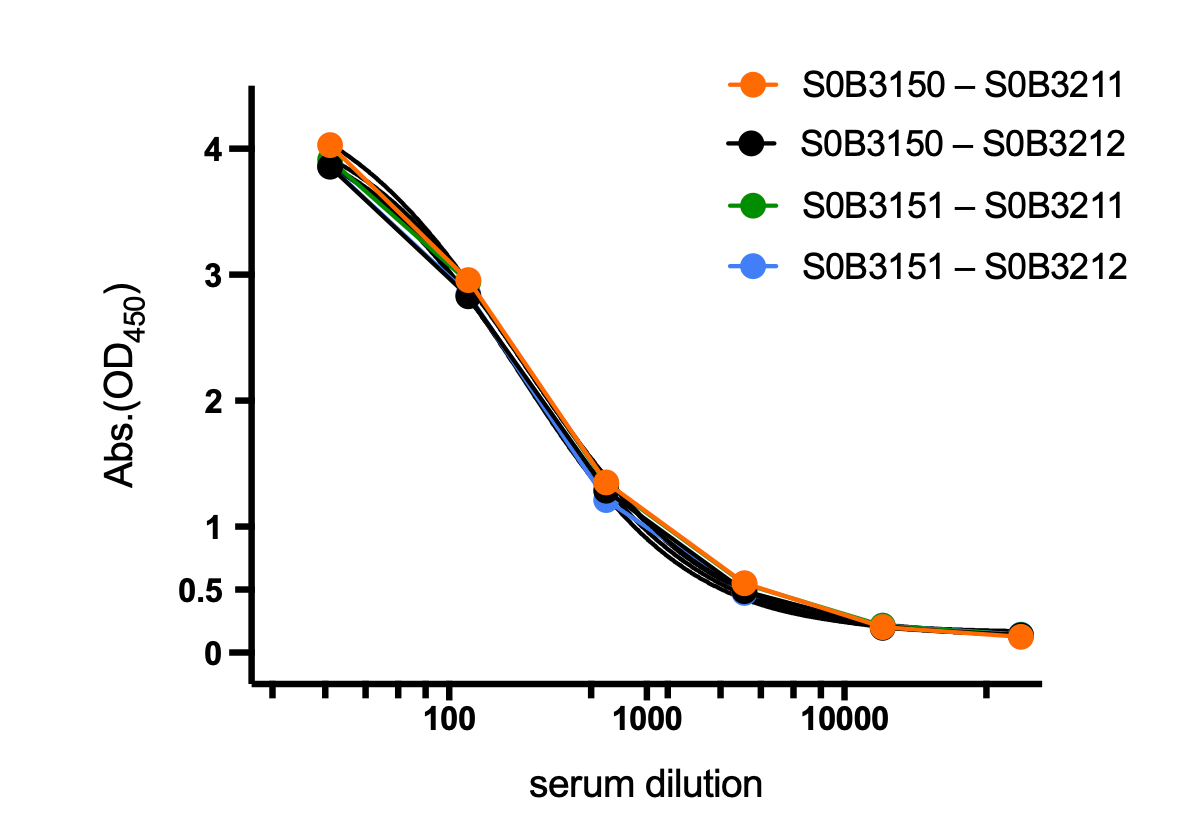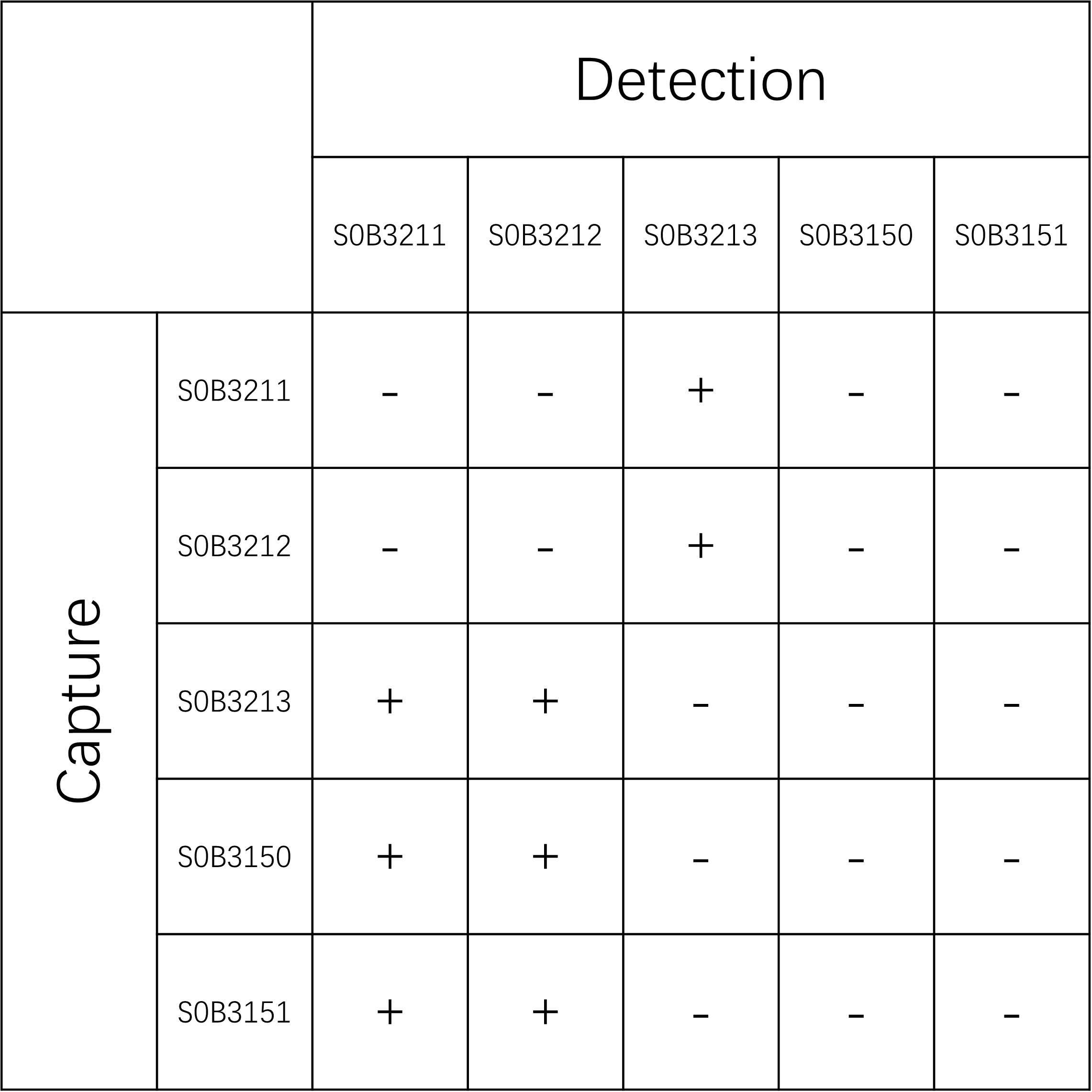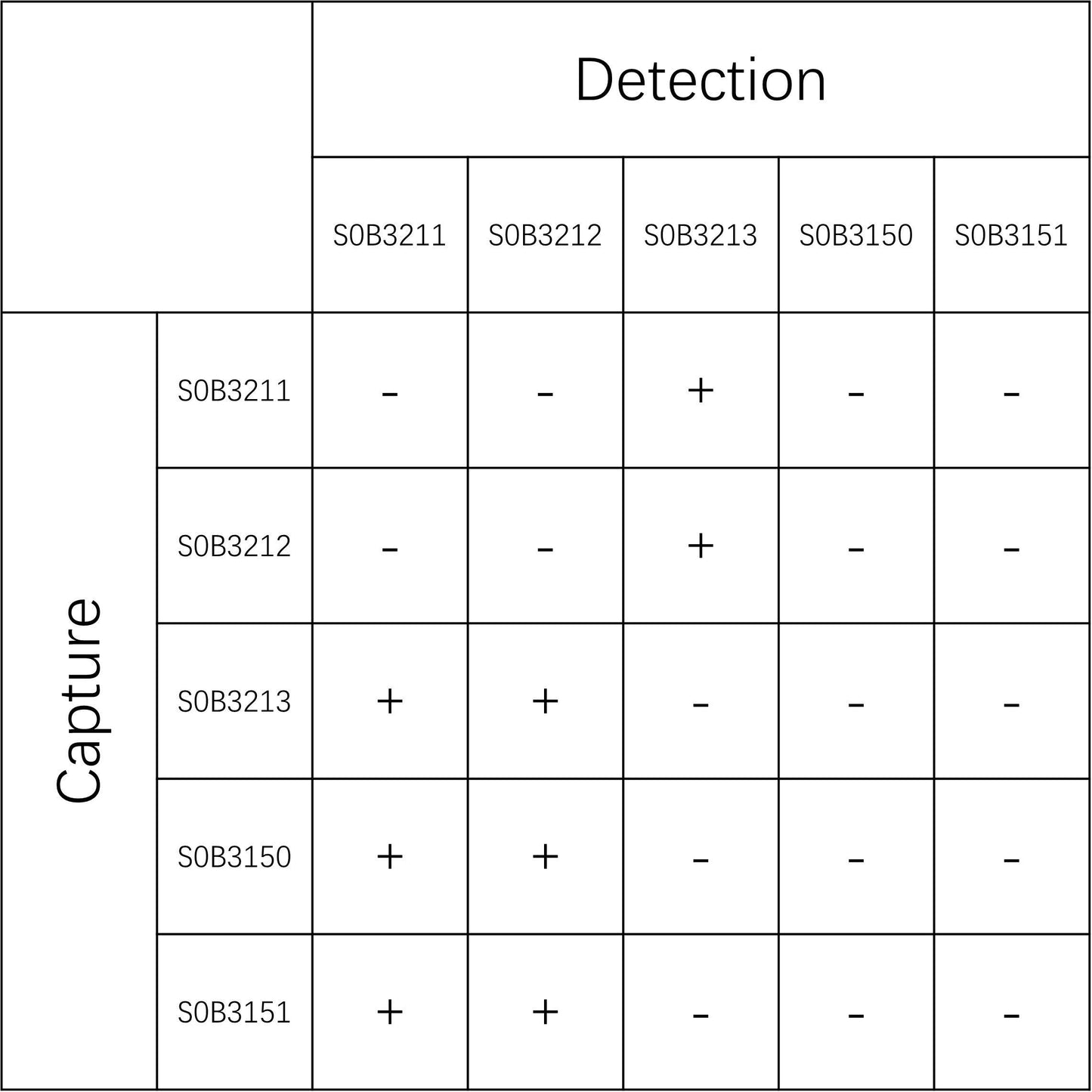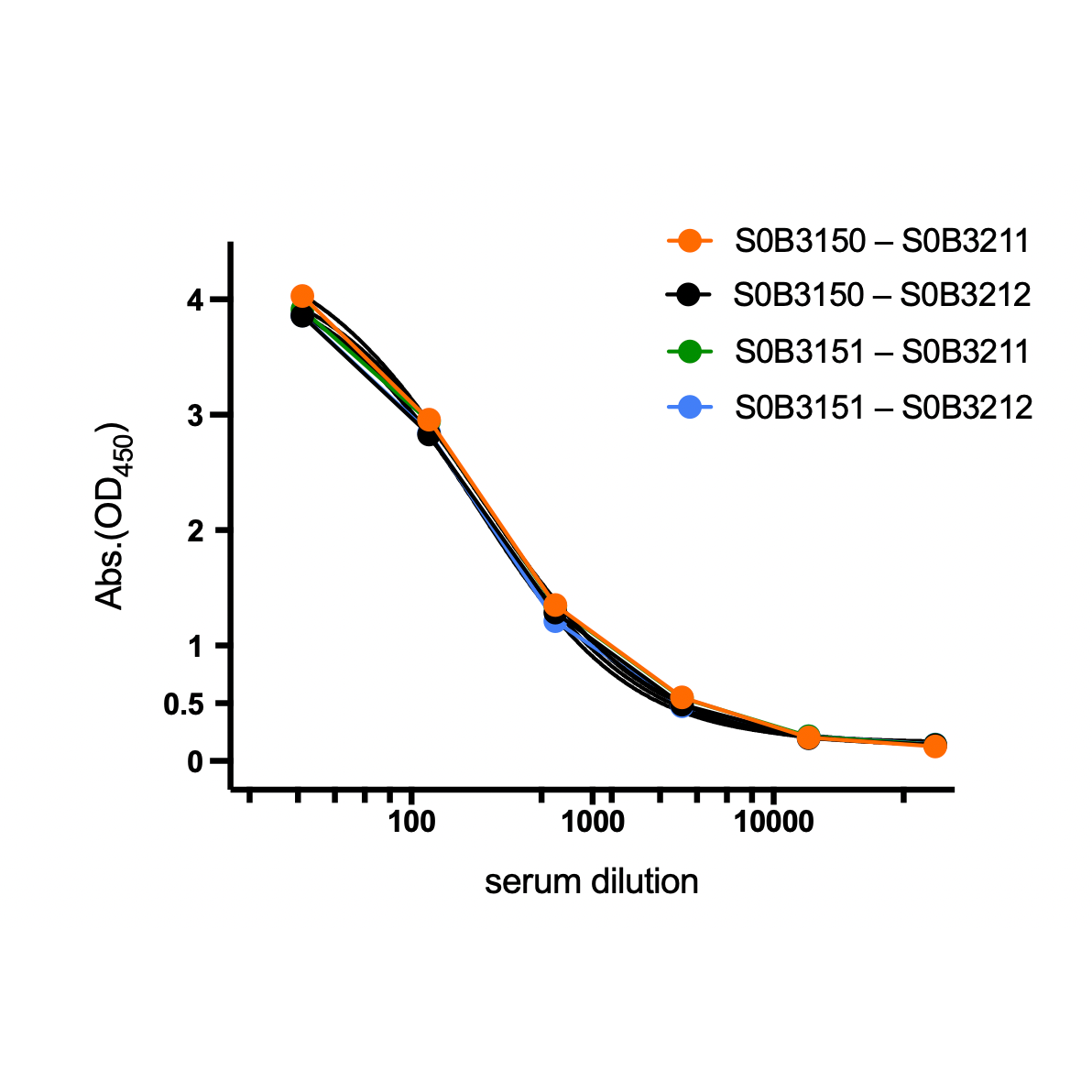Titration curve of sTfR-Tf complex contained in normal human serum using sTfR-Tf assay. Capture MAb; 100 ng/ well, Detection MAb conjugated with biotin, Room temperature
Product Details
Product Details
Product Specification
| Host | Rabbit |
| Antigen | TRF |
| Synonyms | Beta-1 metal-binding globulin, Transferrin |
| Immunogen | Native protein |
| Accession | P02787 |
| Clone Number | SDT-613-22 |
| Antibody Type | Recombinant mAb |
| Isotype | IgG |
| Application | Sandwich ELISA |
| Reactivity | Hu |
| Cross Reactivity | Does not recognize lactoferrin |
| Purification | Protein A |
| Concentration | 2 mg/ml |
| Purity | >95% by HPLC |
| Conjugation | Unconjugated |
| Physical Appearance | Liquid |
| Storage Buffer | PBS pH7.4, 0.03% Proclin 300 |
| Stability & Storage | 12 months from date of receipt / reconstitution, 2 to 8 °C as supplied |
Dilution
| application | dilution | species |
| Sandwich ELISA | N/A |
Background
Iron in plasma is bound to the transport protein transferrin. Transferrin is responsible for 50% to 70% of the iron binding capacity of serum. Transferrin has two iron-binding sites and is largely, but not exclusively, synthesized by the liver. To be trans ported into cells, iron loaded transferrin is bound to transferrin receptor, and their complex passes into cells by means of internalization, where iron releases by Ph dependent mechanism. Transferrin levels rise with iron deficiency and fall in cases of iron overload. An increase in transferrin is seen in iron deficiency anemia. It may also be increased late in pregnancy and in women on oral contraceptives. It is decreased in conditions associated with increased protein loss, such as nephrotic syndrome, chronic renal failure, severe burns, and protein-deficiency states and in severe liver disease. Transferrin is a negative acute-phase protein and will be decreased during any inflammatory state or severe illness.
Picture
Picture
Validation Data

Paired Recommendations





